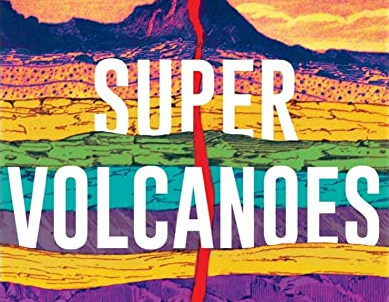 A terrific debut book by Robin George Andrews, who trained as a volcanologist but diverted from primary research into popular science writing. (He has also done a bunch of freelancing for National Geographic, Scientific American, and the like.) The book profiles Kilauea, Yellowstone, Ol Doinyo Lengai, the oceanic ridge system (including Iceland), the Moon, Mars, Venus, and the cryovolcanoes of the outer solar system, plus bookending diversions into Vesuvius and Fuji. I was surprised at how much of the page count was devoted to extraterrestrial volcanism, but that decision certainly leaves plenty of Earthly volcanoes available to be profiled in Super Volcanoes II. The writing style is very excited and skews to the popular side of the jargon-fluff spectrum. The decision to de-emphasize jargon is laudable, but I found that the language can tend to be a bit flowery, especially in the first half of the book. For instance, he refers to the magma chamber below Yellowstone as a “dragon,” a “cupola,”, a “missile,” a “grenade,” and (you can hear the thesaurus pages flipping) a “wyvern.” It erupts “shattered fire.” These metaphors can be doubtless engaging with some audiences, but my taste is for a bit more direct language. It’s a fine line, and I’m not sure whether there’s a clear way to nail “just the right amount of technical detail,” but I think one technique (employed by Andrews) is to weave in brief interviews with working volcanologists, allowing them to use their own words to describe eruptive phenomena, which then gives Andrews the latitude to “translate.” He does a fine job with presenting these people as humans, and somehow makes the reader feel welcomed by the volcanological community. All told, I found Super Volcanoes an enjoyable read, and it will have a place of honor on my geological bookshelf.
A terrific debut book by Robin George Andrews, who trained as a volcanologist but diverted from primary research into popular science writing. (He has also done a bunch of freelancing for National Geographic, Scientific American, and the like.) The book profiles Kilauea, Yellowstone, Ol Doinyo Lengai, the oceanic ridge system (including Iceland), the Moon, Mars, Venus, and the cryovolcanoes of the outer solar system, plus bookending diversions into Vesuvius and Fuji. I was surprised at how much of the page count was devoted to extraterrestrial volcanism, but that decision certainly leaves plenty of Earthly volcanoes available to be profiled in Super Volcanoes II. The writing style is very excited and skews to the popular side of the jargon-fluff spectrum. The decision to de-emphasize jargon is laudable, but I found that the language can tend to be a bit flowery, especially in the first half of the book. For instance, he refers to the magma chamber below Yellowstone as a “dragon,” a “cupola,”, a “missile,” a “grenade,” and (you can hear the thesaurus pages flipping) a “wyvern.” It erupts “shattered fire.” These metaphors can be doubtless engaging with some audiences, but my taste is for a bit more direct language. It’s a fine line, and I’m not sure whether there’s a clear way to nail “just the right amount of technical detail,” but I think one technique (employed by Andrews) is to weave in brief interviews with working volcanologists, allowing them to use their own words to describe eruptive phenomena, which then gives Andrews the latitude to “translate.” He does a fine job with presenting these people as humans, and somehow makes the reader feel welcomed by the volcanological community. All told, I found Super Volcanoes an enjoyable read, and it will have a place of honor on my geological bookshelf.

